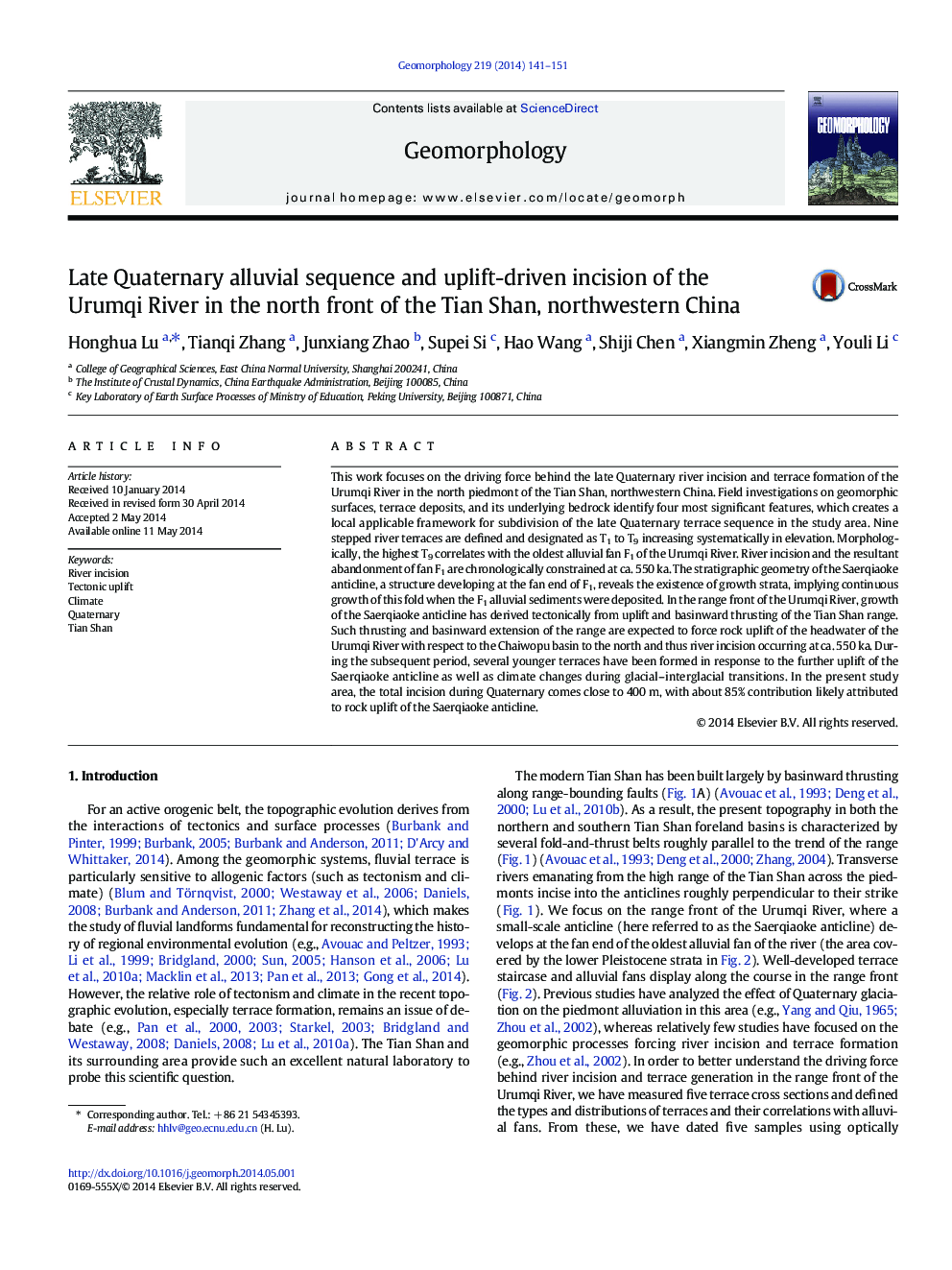| Article ID | Journal | Published Year | Pages | File Type |
|---|---|---|---|---|
| 6432456 | Geomorphology | 2014 | 11 Pages |
Highlightâ¢Nine terraces were identified in the Urumqi River exit from the northern Tian Shan.â¢The terraces were dated by OSL, ESR, and AMS 14C dating methods.â¢Local tectonic setting was characterized by geological and geomorphic investigations.â¢The favorable tectonic condition promoted river incision and terrace formation.
This work focuses on the driving force behind the late Quaternary river incision and terrace formation of the Urumqi River in the north piedmont of the Tian Shan, northwestern China. Field investigations on geomorphic surfaces, terrace deposits, and its underlying bedrock identify four most significant features, which creates a local applicable framework for subdivision of the late Quaternary terrace sequence in the study area. Nine stepped river terraces are defined and designated as T1 to T9 increasing systematically in elevation. Morphologically, the highest T9 correlates with the oldest alluvial fan F1 of the Urumqi River. River incision and the resultant abandonment of fan F1 are chronologically constrained at ca. 550Â ka. The stratigraphic geometry of the Saerqiaoke anticline, a structure developing at the fan end of F1, reveals the existence of growth strata, implying continuous growth of this fold when the F1 alluvial sediments were deposited. In the range front of the Urumqi River, growth of the Saerqiaoke anticline has derived tectonically from uplift and basinward thrusting of the Tian Shan range. Such thrusting and basinward extension of the range are expected to force rock uplift of the headwater of the Urumqi River with respect to the Chaiwopu basin to the north and thus river incision occurring at ca. 550Â ka. During the subsequent period, several younger terraces have been formed in response to the further uplift of the Saerqiaoke anticline as well as climate changes during glacial-interglacial transitions. In the present study area, the total incision during Quaternary comes close to 400Â m, with about 85% contribution likely attributed to rock uplift of the Saerqiaoke anticline.
